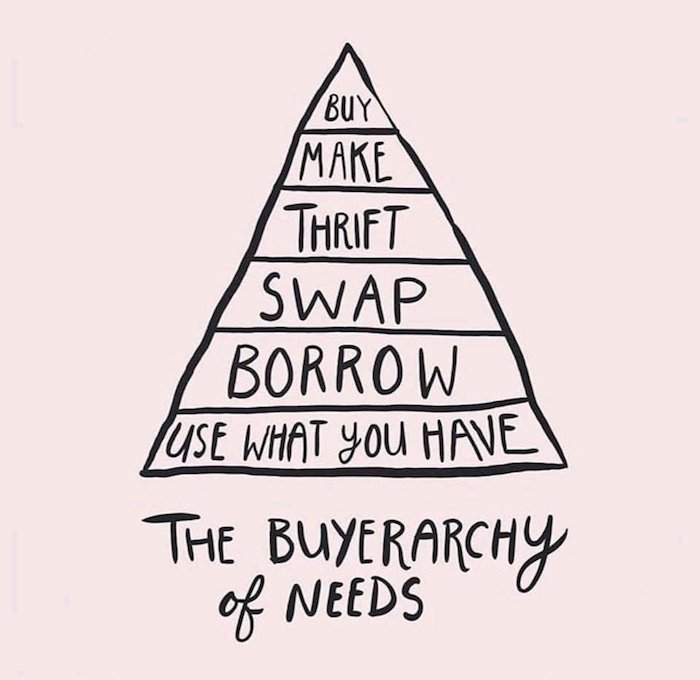A slow fashion guide for beginners
January is the month of good resolutions for most of us. It’s the perfect time to pick up new habits, especially if you want to reduce your impact on the environment. What if you started with your closet? Let’s dive into the slow fashion movement together.
What is slow fashion?
Wikipedia defines slow fashion as “a concept describing the opposite to fast fashion and part of the slow movement, which advocates for manufacturing in respect to people, environment and animals. As such, contrary to industrial fashion practices, slow fashion involves local artisans and the use of eco-friendly materials, with the goal of preserving crafts and the environment and, ultimately, provide value to both consumers and producers”. Long story short, slow fashion is about buying less, choosing quality over quantity and making it last as long as possible.
Buy less, choose well, make it last.
My rookie mistake was to believe that in order to have a greener wardrobe, I needed to replace everything in my closet with brand new clothes from sustainable brands. Not only would that have been costly, but it would also have made zero sense. Why replace perfectly wearable clothes? No matter how sustainably a garment is made, it will still require resources to be manufactured and transported. The most sustainable clothes are the ones you already own.
Bodies change, lifestyles evolve, new needs arise and garments just wear out eventually. That’s when we want to go shopping. And well… let’s be honest, sometimes it just feels good to treat yourself to something nice, right? All you need to know is that there are many ways of making your wardrobe more sustainable. You can stick to shopping from sustainable brands or buying everything second hand and even making your own if you are talented enough. It’s up to you!
Declutter your closet
This might feel hard and time consuming but it works wonders. When you sort your closet, you get a good view of what you have. Make 3 piles: the clothes you actually wear, the ones you don’t wear anymore and the ones you’re not sure about. Keep the clothes you wear, donate the clothes you don’t wear or recycle them if they are worn out. Store the rest away for a while. You might want to wear it again eventually.
Shop mindfully
After decluttering your closet, you might have noticed that you were missing certain pieces or that some of them needed a replacement. Every time you want to buy something, ask yourself if you really need it, if you will use it and if you can borrow it from someone. Besides, wait a few days before buying something you think you really want. It will save you from many impulse purchases.
Consider buying vintage and second-hand items
Pre-owned clothes don’t consume new ressources and don’t support the fast-fashion industry. They’re one of the most eco-friendly ways to add new pieces to your wardrobe. Plus, they’re extremely affordable so you can use the money you’re saving on fun things.
Look for sustainable brands.
Sometimes, you can’t find what you need in thrift shops, or well… some things, like underwear, just can’t be bought second-hand. So if you’re going to buy something new, it’s best to buy from a sustainable brand. Be careful though! Just because brands say they are sustainable and ethical doesn’t mean they are. Look for labels and research them on Good On You.
Get started with slow-fashion with a shopping detox.
Wether it’s for a month, 6 months or a whole year, forcing yourself not to buy anything for a period of time teaches you that you don’t need as much as you think. You will learn how to make the most out of your wardrobe by styling the same pieces in many different ways. You will notice that buying new clothes all the time doesn’t make you feel better. It’s quite the opposite actually. You might also identify your shopping triggers, like stress or anxiety, and learn how to regain control over the situation.
Follow slow-fashion influencers for inspiration.
Most of the time, social media sucks, but in some cases it can be very useful. It’s how I discovered a bunch of sustainable fashion brands and also how I find styling ideas when I don’t know what to wear. And who knows, maybe you’ll end up making new friends who share the same vision as you!
Learn how to care for your clothes
Most of the damage on clothes happens when we wash them. Learning how to care for them the right way will make them last longer, meaning you won’t need to replace them as often. You can even take things further by learning how to fix or upcycle them when they wear out.
Use the pyramid
Last but not least, the buyerarchy pyramid created by Livia Firth sums up everything you need to do to become a fashion eco warrior.


